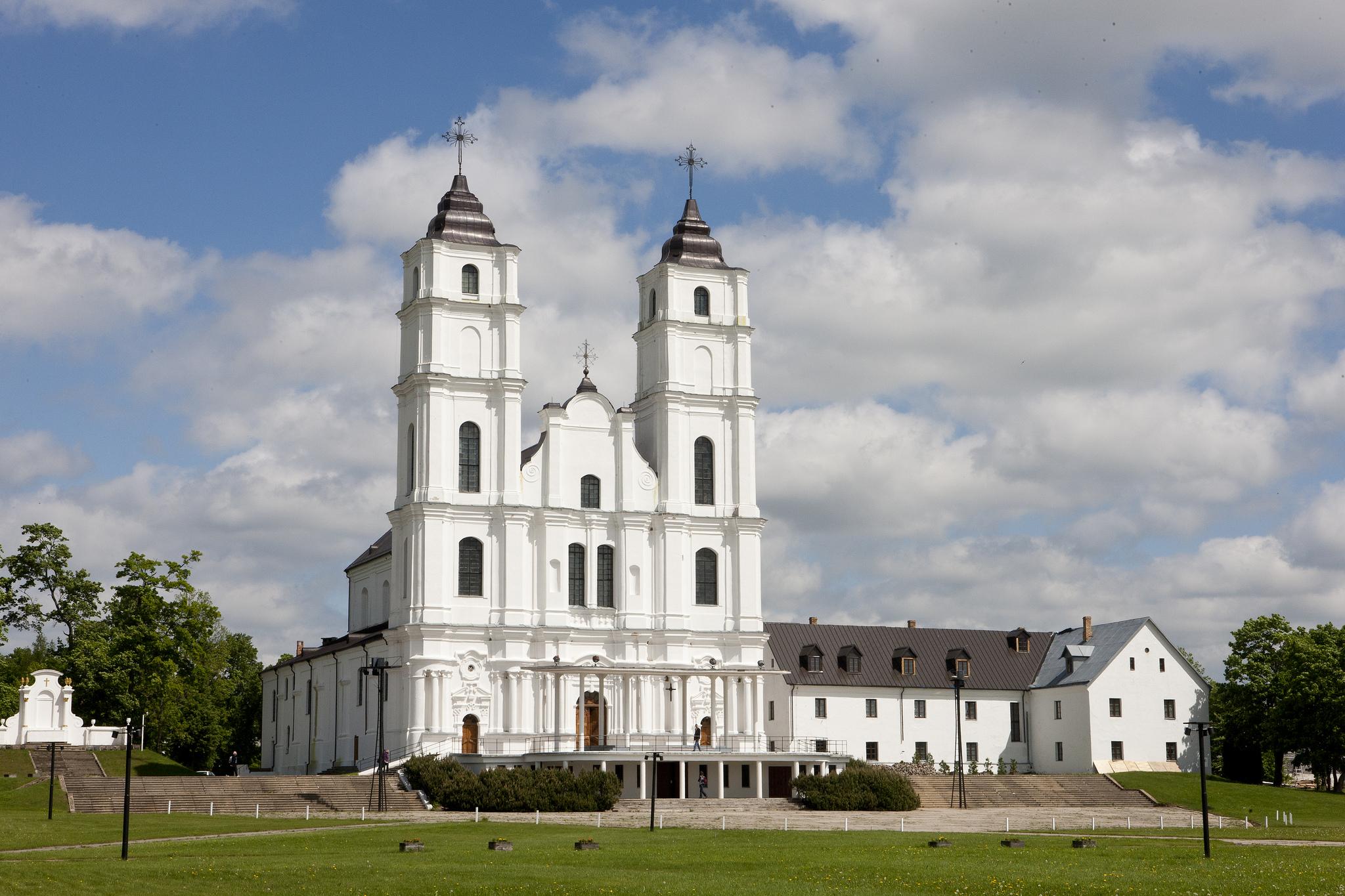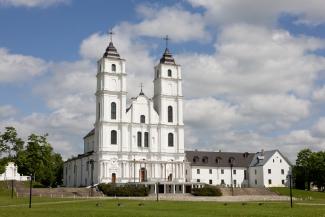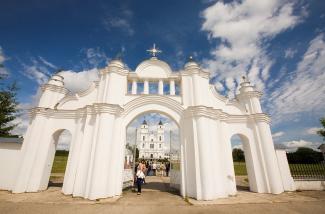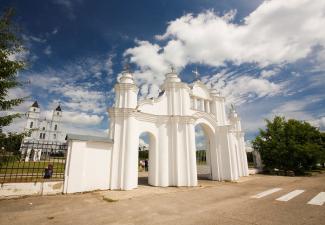Aglona Basilica is the major Roman Catholic shrine of Latvia. Pilgrims flock to Aglona on August 15 each year to celebrate the Assumption of the Blessed Virgin Mary into Heaven.
The Aglona Basilica compound
Aglona Basilica
Aglona Basilica, built in the late Baroque style, boasts two approximately 60-meter-high towers. Inside the church, there are groin vaults, arcs and columns featuring rich Rococo style adornments. The church’s furbishing is from the 18th century and its bye-altars have been built in the early 19th century.
Icon
A collection of paintings, sculptures and other artwork kept in the church includes a 17th century icon, “Our Miraculous Lady of Aglona”, which is only unveiled to the public during religious celebrations. The icon is believed to have miraculous powers of healing.
Our Lady of Aglona
There are many legends about miracles of Aglona. One of them has that peasant Kristaps Mateisāns from Spīku village was once taking his child to Aglona for christening. A fierce storm blew up as he was rowing his boat across Lake Cirisu and it rocked violently in the choppy waters. The peasant, struggling to navigate his boat, did not notice his child overboard. When he realized the tragedy, he cried out to the Lady of Aglona, and miraculously, his child emerged from the water near the shore, rescued by people on the lakeside.
Sacred spring
Divine healing properties are attributed to the water running from a spring on the shore of Lake Egle near the basilica.
Service square
In preparation for the historic visit of Pope John Paul II to Latvia in the 1990s, a square was created in front of the basilica for processions and major church services drawing large crowds of people. The square has been created as a sacred enclosed area and a part of the basilica’s architectural ensemble.
Make a pilgrimage to Aglona
Annual pilgrimages to Aglona for the August 15 celebration of the Assumption of the Blessed Virgin Mary are among the most moving traditions of the modern-day Roman Catholics. The pilgrims making the journey to Aglona hail not only from Latvia but also from Lithuania, Poland and other European countries.
Among Latvian pilgrims, Catholics from the southwestern seaside city of Liepaja cover the longest distance, as it takes more than weak for them to reach Aglona. As they approach Aglona, bigger and smaller groups of worshipers fill the roads in the area. The night mass is a moving and inspiring experience to everyone standing side by side with their brothers and sisters in faith in basilica square.
History of Aglona Basilica
Ancient Latgallian place of worship
According to the latest data, Aglona has been known as one of the centers populated by Baltic tribes already since 1800 – 500 B.C. History sources suggest that for the Baltic tribe of Latgallians made it a place of worship ages ago. The first recorded mention of Aglona as a Christian center dates back to 1263 when Lithuanian King Mindaugas and his two sons, Ruklys and Rupeikis, were tragically killed in Aglona.
The origins of the monastery
In 1697, local Polish noblewoman Jeta-Justina Sastodicka, supported by Livonian Bishop Mikolaj Poplawski, invited Dominicans from Vilnius to establish a monastery and school in Aglona. To put the plan into practice, the Sastodicki couple contributed 17 villages with 90 homesteads - “For God’s glory and the blessing of Latvians”. Father Remigius Mosokowsky, the prior of the Vilnius Dominican Monastery, arrived in Aglona in 1688 to choose the place for building the new monastery and church.
Construction of the monastery and church
In the late 17th century, the Dominican Order established its monastery and built the first church in Aglona. After the church, which was completed in 1699, burned to the ground, a stone monastery building and the current church were constructed from 1768 to 1780. The church’s interior was created in the 18th-19th centuries, and the organ and confessional were made in the late 18th century.
Basilica Minoris
Marking the 200th anniversary of Aglona Basilica in 1980, Pope John Paul II granted it the title of Basilica minoris, or ‘small basilica’. Aglona Basilica is the only bearer of this title in Latvia.



